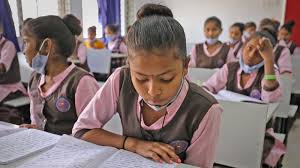Tribal Welfare in Union Budget 2025–26

- 09 Feb 2025
In News:
India is home to over 10.45 crore Scheduled Tribe (ST) individuals, comprising 8.6% of the population. Concentrated largely in remote and underdeveloped regions, ST communities face persistent challenges such as land alienation, limited access to quality education, healthcare deficits, and socio-economic exclusion. The Union Budget 2025–26 signals a paradigm shift in tribal welfare, in line with the vision of Viksit Bharat.
Budgetary Commitment
The total allocation for tribal welfare has risen to ?14,925.81 crore in 2025–26—a 45.79% jump from the previous year and a staggering 231.83% increase from 2014–15 levels. The Ministry of Tribal Affairs has witnessed a consistent rise in budget: from ?7,511.64 crore (2023–24) to ?10,237.33 crore (2024–25), and now ?14,925.81 crore.
Flagship Schemes and Initiatives
- Eklavya Model Residential Schools (EMRS) received ?7,088.60 crore, up from ?4,748 crore, to provide quality residential education to ST students. EMDBS, a pilot initiative in high-density tribal areas, enhances outreach.
- Pradhan Mantri Janjatiya Vikas Mission (PMJVM) saw a sharp rise to ?380.40 crore. It promotes tribal entrepreneurship, sustainable Minor Forest Produce (MFP) use, and value chain development.
- Pradhan Mantri Adi Adarsh Gram Yojana (PMAAGY) was allocated ?335.97 crore (163% increase). It aims to convert tribal-majority villages into model habitations by ensuring convergence of development schemes.
- PM-JANMAN Multi-Purpose Centers (MPCs) received ?300 crore, targeting Particularly Vulnerable Tribal Groups (PVTGs) with essential services and institutional support.
- Dharti Aaba Janjatiya Gram Utkarsh Abhiyan (DAJGUA), launched in 2024, envisions the holistic development of 63,843 tribal villages. With an outlay of ?79,156 crore over five years, it integrates 17 ministries and 25 interventions. The Ministry of Tribal Affairs has allocated ?2,000 crore for 2025–26 alone.
Persistent Challenges
Despite constitutional safeguards (Articles 15(4), 46, 244, 275(1), etc.), tribal communities face significant hurdles:
- Land and Resource Rights: Only 50% of 42.76 lakh Forest Rights Act (FRA) claims have been approved (MoTA, 2022). Displacement from mining and infrastructure projects persists.
- Education: ST literacy stands at 59% (Census 2011) with high dropout rates due to poverty and language gaps.
- Health: Malnutrition, maternal mortality, and diseases like Sickle Cell remain endemic.
- Marginalization: Tribals face economic deprivation, exploitation (bonded labor, trafficking), and erosion of cultural identity.
- Underrepresentation: Despite reserved seats, policy influence remains limited.
The Way Forward
- Land Rights: Effective implementation of FRA and safeguards against forced displacement.
- Education: Expand EMRS/EMDBS and promote bilingual, culturally relevant curricula.
- Health: Improve rural health infrastructure and target tribal-specific diseases.
- Women’s Empowerment: Support SHGs and skill-based livelihood through schemes like Adivasi Mahila Sashaktikaran Yojana.
- Cultural Continuity: Support tribal art, festivals, and language preservation through digital and educational platforms.
- Inclusive Governance: Strengthen Gram Sabhas and tribal representation in policymaking.
